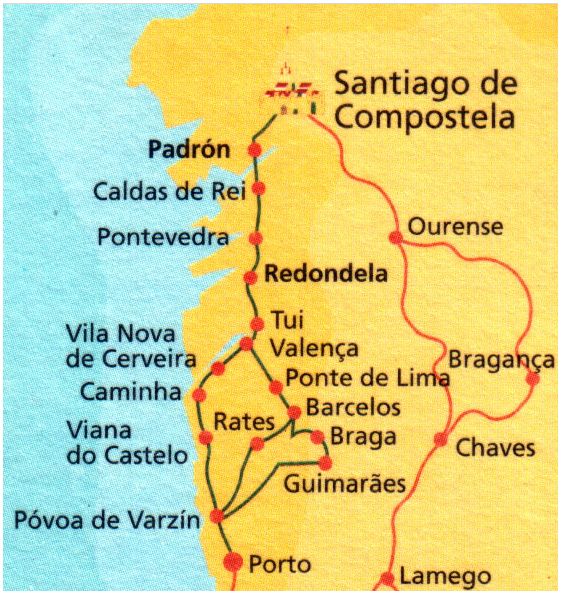Santiago Paths
In the ninth century, it is believed that found the tomb of the apostle Santiago in Galicia. According to medieval tradition, the Palo hermit incredulous by the lights that were being produced in Libredão grove, in the night, was to alert the bishop of Iria Flavia, Teodomiro, had found the remains of Santiago Maior and his two disciples on site which is now Compostela. The news of this event reached Alfonso II of Asturias, which soon made a pilgrimage, announcing that this path would be the pilgrimage of Christianity.
With the changes of the roads, the route taken by pilgrims was slightly changed, the last change made by a group of Portuguese and Spanish who painted the last arrow of the route between Lisbon and Santiago.
Noteworthy is the path that crosses the Alto Minho, being composed of two secular routes of the Portuguese Way to Santiago, while one comes from the inside, another runs along the waterfront.

On the route of the interior, it goes through Ponte de Lima to Valencia, covering 38 kilometers, integrating the royal road, the Lima-Valencia Porto-Barcelos-bridge, even though the essential way to Santiago, and may converge other routes. This route is from the fourteenth century, for hikers, travelers, merchants, pilgrims, nobles and kings, as Alfonso II, Queen Santa Isabel and King Manuel. Ponte de Lima was therefore the Roman / Medieval bridge, obligatory passage point and therefore a national symbol for the Portuguese way.

Since the path along the coast, connects the town Porto to other coastal municipalities of northern Portugal, reaching Galicia, to overcome the Minho river in La Guardia, in Goian or Tui. This journey took a greater importance since the eighteenth century, and recurrent coastal populations or people disembarking in maritime ports.



